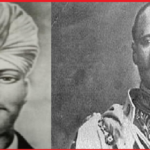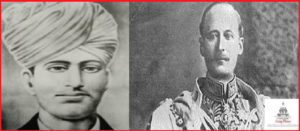Centuries of bloodshed, foreign domination, and internal divisions have left Ukraine in a precarious position between East and West.
As the threat of a Russian invasion of Ukraine continues to dominate the news, a look back at the long, intertwined history of the contentious neighbors reveals how the stage was set for today’s conflict.
The two countries’ shared heritage goes back more than a thousand years to a time when Kyiv, now Ukraine’s capital, was at the center of the first Slavic state, Kyivan Rus, the birthplace of both Ukraine and Russia. In A.D. 988 Vladimir I, the pagan prince of Novgorod and grand prince of Kyiv, accepted the Orthodox Christian faith and was baptised in the Crimean city of Chersonesus. From that moment on, Russian leader Vladimir Putin recently declared, “Russians and Ukrainians are one people, a single whole.”
Yet over the past 10 centuries, Ukraine has repeatedly been carved up by competing powers. Mongol warriors from the east conquered Kyivan Rus in the 13th century. In the 16th century Polish and Lithuanian armies invaded from the west. In the 17th century, war between the Polish-Lithuanian Commonwealth and the Tsardom of Russia brought lands to the east of the Dnieper River under Russian imperial control. The east became known as “Left Bank” Ukraine; lands to the west of the Dnieper, or “Right Bank,” were ruled by Poland.
More than a century later, in 1793, right bank (western) Ukraine was annexed by the Russian Empire. Over the years that followed, a policy known as Russification banned the use and study of the Ukrainian language, and people were pressured to convert to the Russian Orthodox faith.
Ukraine suffered some of its greatest traumas during the 20th century. After the communist revolution of 1917, Ukraine was one of the many countries to fight a brutal civil war before being fully absorbed into the Soviet Union in 1922. In the early 1930s, to force peasants to join collective farms, Soviet leader Joseph Stalin orchestrated a famine that resulted in the starvation and death of millions of Ukrainians. Afterward, Stalin imported large numbers of Russians and other Soviet citizens—many with no ability to speak Ukrainian and with few ties to the region—to help repopulate the east.
These legacies of history created lasting fault lines. Because eastern Ukraine came under Russian rule much earlier than western Ukraine, people in the east have stronger ties to Russia and have been more likely to support Russian-leaning leaders. Western Ukraine, by contrast, spent centuries under the shifting control of European powers such as Poland and the Austro-Hungarian Empire—one reason Ukrainians in the west have tended to support more Western-leaning politicians. The eastern population tends to be more Russian-speaking and Orthodox, while parts of the west are more Ukrainian-speaking and Catholic.
With the collapse of the Soviet Union in 1991, Ukraine became an independent nation. But uniting the country proved a difficult task. For one, “the sense of Ukrainian nationalism is not as deep in the east as it is in west,” says former ambassador to Ukraine Steven Pifer. The transition to democracy and capitalism was painful and chaotic, and many Ukrainians, especially in the east, longed for the relative stability of earlier eras.
“The biggest divide after all these factors is between those who view the Russian imperial and Soviet rule more sympathetically versus those who see them as a tragedy,” says Adrian Karatnycky, a Ukraine expert and former fellow at the Atlantic Council of the United States. These fissures were laid bare during the 2004 Orange Revolution, in which thousands of Ukrainians marched to support greater integration with Europe.
On ecological maps you can even see the divide between the southern and eastern parts of Ukraine—known as the steppes—with their fertile farming soil and the northern and western regions, which are more forested, says Serhii Plokhii, a history professor at Harvard and director of its Ukrainian Research Institute. He says a map depicting the demarcations between the steppe and the forest, a diagonal line between east and west, bears a “striking resemblance” to political maps of Ukrainian presidential elections in 2004 and 2010.
Crimea was occupied and annexed by Russia in 2014, followed shortly after by a separatist uprising in the eastern Ukrainian region of Donbas that resulted in the declaration of the Russian-backed People’s Republics of Luhansk and Donetsk. Today, Russian troops are again massed on Ukraine’s borders, fault lines that reflect the regions tumultuous history.
By-Eve Conant








More Stories
That great monk who at a very young age gave something to the society which cannot be forgotten. Swami Darshananand
Revolutionary brother Balmukund, who made British Viceroy Lord Harding tremble.
Romani community: Those citizens of Europe who are considered untouchable!!